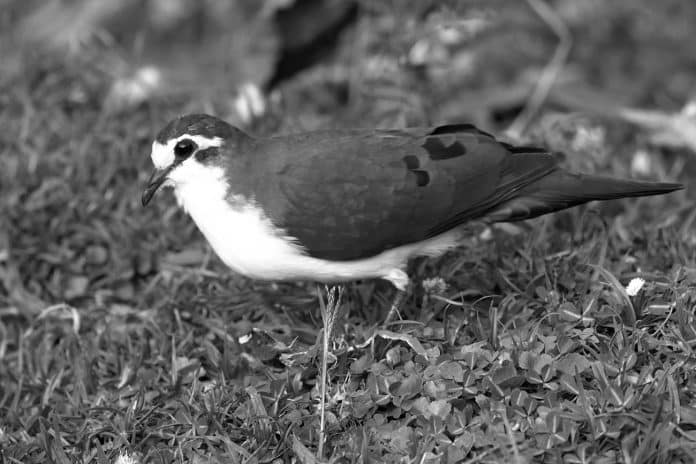Tanzania’s Tambourine Dove: A Symphony of Beauty and Resilience
Introduction to the Tambourine Dove
Tanzania is renowned for its rich biodiversity, and one of its hidden treasures is the Tambourine Dove. This small bird, known for its melodious call and striking appearance, is a symbol of beauty and resilience in the Tanzanian wilderness. In this article, we will delve into the habitat and distribution of the Tambourine Dove in Tanzania, explore its physical characteristics and behavior, and shed light on the conservation efforts being made to protect this unique species.
Habitat and Distribution of the Tambourine Dove in Tanzania
The Tambourine Dove is primarily found in the eastern and southern regions of Tanzania, where it inhabits a variety of habitats ranging from lowland forests to savannah woodlands. This versatile bird has also been spotted in the coastal areas and even in urban parks. Although its range extends beyond Tanzania, this country is considered a stronghold for the Tambourine Dove due to the availability of suitable nesting sites and abundant food sources.
Physical Characteristics and Behavior of the Tambourine Dove
The Tambourine Dove is a small bird, measuring around 20 centimeters in length. Its most distinctive feature is its vibrant plumage, which consists of a combination of emerald green, purple, and bronze feathers. The male and female doves share similar coloration, making it challenging to differentiate between the sexes. However, during courtship displays, the males puff up their chests and produce a rhythmic drumming sound by rapidly beating their wings, hence the name “Tambourine Dove.”
In terms of behavior, the Tambourine Dove is known for its shy and elusive nature. It prefers to forage on the forest floor, feeding on fallen fruits, seeds, and insects. When threatened, it will quickly retreat into the dense vegetation or take flight, using its short wings to maneuver swiftly through the trees. This bird is mainly active during the early morning and late afternoon, spending the hottest hours of the day in shaded areas.
Conservation Status and Threats to the Tambourine Dove
The Tambourine Dove is currently listed as a species of least concern by the International Union for Conservation of Nature (IUCN). However, this does not mean that it is free from threats. Habitat destruction caused by deforestation and land conversion for agriculture poses a significant challenge for the Tambourine Dove’s survival. Additionally, illegal capture for the pet trade and hunting for food in some local communities further endanger this species.
Efforts and Initiatives for the Conservation of the Tambourine Dove
Fortunately, there are several ongoing efforts and initiatives aimed at conserving the Tambourine Dove in Tanzania. Local organizations, such as the Tanzanian Bird Atlas Project, conduct research and monitor the population trends of this species. They work closely with communities living near Tambourine Dove habitats to raise awareness about the importance of conservation and the detrimental effects of habitat destruction. Furthermore, the Tanzanian government has implemented protected areas and wildlife sanctuaries where the Tambourine Dove and other endangered species can thrive.
Unique Features and Adaptations of the Tambourine Dove
One of the unique adaptations of the Tambourine Dove is its ability to mimic the vocalizations of other bird species. This remarkable talent not only helps it communicate with other doves but also serves as a defense mechanism against predators. By imitating the calls of larger and more aggressive birds, the Tambourine Dove creates confusion and reduces the chances of being attacked.
Another interesting feature of this bird is its breeding behavior. The Tambourine Dove forms monogamous pairs and builds a small, cup-shaped nest using twigs, leaves, and moss. The female typically lays one or two eggs, which are incubated by both parents. Once the chicks hatch, they are carefully nurtured and fed until they are ready to leave the nest.
Cultural Significance and Symbolism of the Tambourine Dove in Tanzania
In Tanzanian culture, the Tambourine Dove holds a special place. Its melodious call is often associated with peace and tranquility, and its vibrant plumage is admired for its beauty. The dove has become a symbol of harmony and unity, and its image is frequently depicted in traditional artworks and crafts. Many Tanzanians believe that hearing the call of the Tambourine Dove brings good luck and blessings.
Where to Spot Tambourine Doves in Tanzania – Top Locations

If you’re an avid birdwatcher or simply want to catch a glimpse of the magnificent Tambourine Dove, there are several top locations in Tanzania where you are likely to spot them. The Udzungwa Mountains National Park, located in the Eastern Arc Mountains, is known for its diverse avian population and is a prime habitat for the Tambourine Dove. Other notable locations include the Selous Game Reserve, Ruaha National Park, and the Usambara Mountains.
Wildlife Sanctuaries and National Parks in Tanzania that Protect the Tambourine Dove
Tanzania boasts a network of protected areas that play a crucial role in safeguarding the Tambourine Dove and its fragile habitat. The Ngorongoro Conservation Area, a UNESCO World Heritage Site, is home to a variety of bird species, including the Tambourine Dove. The Mikumi National Park, located in southern Tanzania, also provides a safe haven for this bird. These protected areas not only protect wildlife but also contribute to the local economy through ecotourism.
The Tambourine Dove is an enchanting bird that adds a touch of beauty and melody to the Tanzanian wilderness. Its resilience in the face of habitat loss and its cultural significance make it a symbol of hope and harmony. Through conservation efforts and initiatives, we can ensure that this unique species continues to thrive in Tanzania’s diverse ecosystems. So, next time you visit Tanzania, keep an ear out for the melodic call of the Tambourine Dove and embrace the symphony of beauty it represents.
For more articles related to Wildlife in Tanzania (Animals), click here!


































